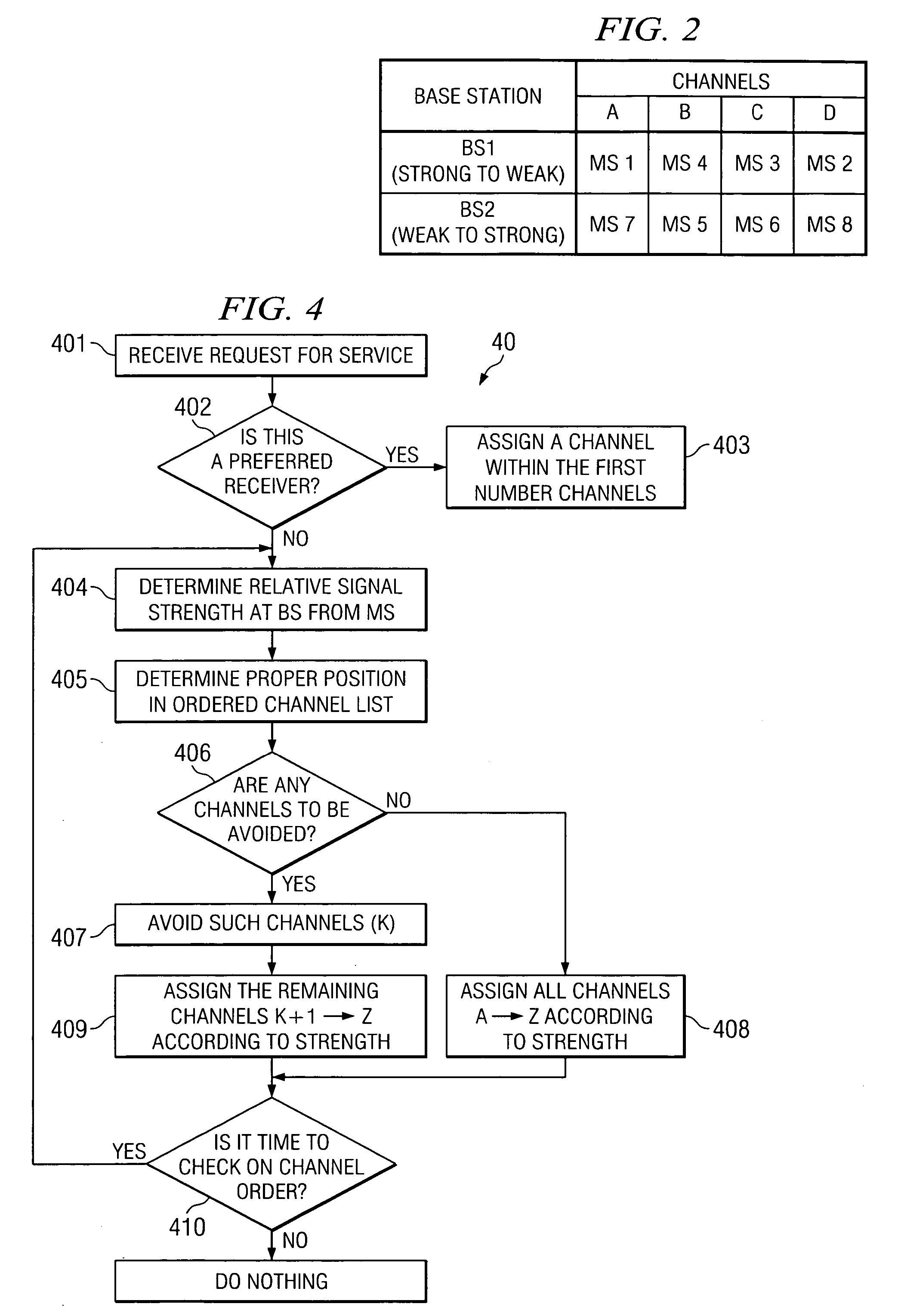Systems and methods for making channel assignments to reduce interference and increase capacity of wireless networks
a wireless network and channel assignment technology, applied in the direction of orthogonal multiplex, multiplex communication, transmission path division, etc., can solve the problems of increasing collision possibility, reducing overall through-put in direct proportion, etc., to improve wireless system capacity, reduce collisions, and reduce interference
- Summary
- Abstract
- Description
- Claims
- Application Information
AI Technical Summary
Benefits of technology
Problems solved by technology
Method used
Image
Examples
Embodiment Construction
[0013]FIG. 1 shows one embodiment 10 in which BS1 makes channel assignments for MSs from the nearest (strongest power levels) to the farthest (weakest power levels), while BS2 makes channel assignments to MSs from the farthest (weakest power levels) to the nearest (strongest power levels). This assignment pattern is shown in FIG. 2.
[0014] Using this channel assignment, pattern MS1-A(1) having a strong signal, is assigned channel A in cell 1. MS7 which is at the edge of cell 2, and has a relatively weak signal from BS2 is assigned the channel A in cell 2. This assignment avoids the situation where MS3 and MS7 are paired on the same channel. Were that to occur, S≈I for transmission in each direction from BS to MS and from MS to BS yielding high interference.
[0015] Each BS can make new channel assignments from time to time so that for the most part the MSs remain assigned according to their relative strength even though they are moving.
[0016] Intelligent assignments can be done in o...
PUM
 Login to View More
Login to View More Abstract
Description
Claims
Application Information
 Login to View More
Login to View More - R&D
- Intellectual Property
- Life Sciences
- Materials
- Tech Scout
- Unparalleled Data Quality
- Higher Quality Content
- 60% Fewer Hallucinations
Browse by: Latest US Patents, China's latest patents, Technical Efficacy Thesaurus, Application Domain, Technology Topic, Popular Technical Reports.
© 2025 PatSnap. All rights reserved.Legal|Privacy policy|Modern Slavery Act Transparency Statement|Sitemap|About US| Contact US: help@patsnap.com



